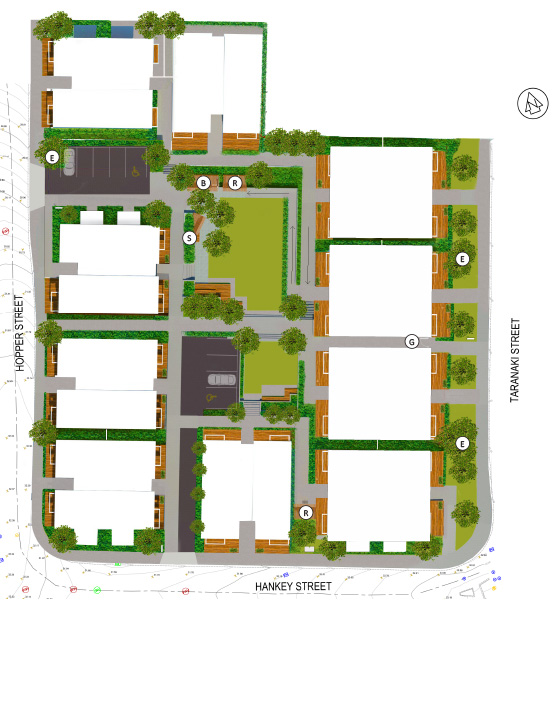A community-oriented courtyard complex replaces 1970's social housing blocks.
Wellington City Council wanted to replace 57 residential units at the former Arlington Apartments Site 2 that no longer met housing quality standards with 104 housing units in seven 3-storey apartments. These were constructed around a central courtyard arranged to give a community feel for the complex.
The overall design was in scale with the surrounding area and become part of the local community. The design team held meetings with tenants for guidance on what they saw as being important to their living environment and what landscape features would be needed. A central court, community facilities and gardens with edible fruit are elements for shared tenant use that engender a community focus.
